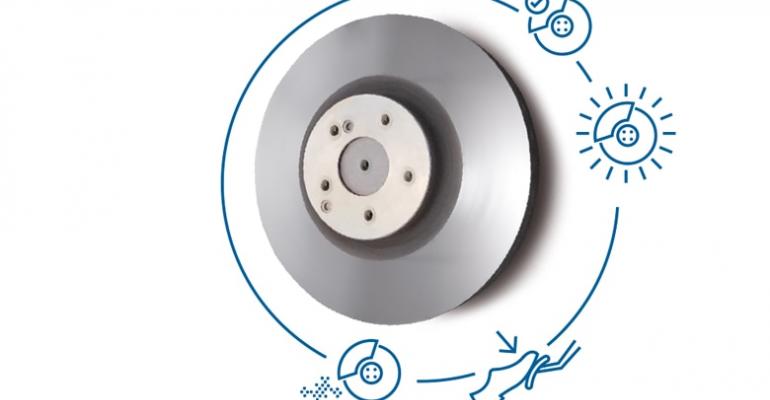Not all vehicle emissions come out of the tailpipe.
Brakes and tires account for 32% of driving-related particulate emissions, half of which is brake dust, according to environmental officials with the German government. Now, Buderus Guss, a subsidiary of automotive supplier Bosch, has devised a cleaner disc brake.
The iDisc generates up to 90% less brake dust than a conventional brake disc. Scheduled to go into production with a European OEM this month, the technology is based on a conventional cast-iron brake disc but also has a tungsten-carbide coating made exclusively by Buderus Guss.
To transform a conventional disc into an iDisc (the “i” stands for innovation), the friction rings are mechanically, thermally and galvanically treated before being coated.
In terms of price, the iDisc costs roughly three times more than a normal cast-iron brake disc but is three times less expensive than a ceramic brake disc. The price is likely to continue falling as production volume increases, Bosch says.
“It’s not just under the hood that Bosch is working to keep the air clean,” Dirk Hoheisel, whose areas of responsibility on the Bosch board of management include Buderus Guss, says in a news release. “The iDisc is the brake disc 2.0. Its market potential is tremendous.”
Adds Gerhard Pfeifer, Buderus Guss managing director: “The iDisc has everything it takes to replace the conventional cast-iron brake disc and become the new standard in the brake-disc market. Given the continued particulate pollution debate in many countries and large cities around the world, there is nothing standing in the way of its breakthrough.”
In addition to a substantial reduction in brake dust, the carbide coating also provides greater operating safety. The braking performance is like that of a ceramic brake, especially in terms of fading – the reduction in stopping power following repeated braking maneuvers. Similar to a ceramic brake disc, the iDisc is highly stable in this respect and loses little deceleration performance.
Wear also is significantly reduced; depending on the strength of the carbide coating, the iDisc’s service life is twice that of a normal brake disc.
Corrosion is not an issue with the iDisc, especially in electric vehicles. Because they recover braking energy in a process known as recuperation, EVs put less strain on the brakes and often must contend with rust formation on friction rings. The temporary slight slip in responsiveness during braking associated with this does not occur with the iDisc, Bosch says.
Wear-resistant and corrosion-free, the iDisc’s shiny carbide coating remains attractive even after years of use, making it an especially good match for the trend toward open rims, the supplier says.
The iDisc is among the latest innovations in brake technology to come from Bosch, which in 2013 launched production of the iBooster, an electromechanical brake booster for three vehicle models for a European customer.
The iBooster does not require any vacuum from the engine to generate more brake pressure. Designed to meet all future requirements of electric drives and driver-assistance systems, it only draws electrical current during braking. The device recovers almost all the energy lost in typical braking by ensuring deceleration rates of up to 0.3 g are reached using only the electric motor. Bosch says it covers all common braking maneuvers in everyday traffic.





